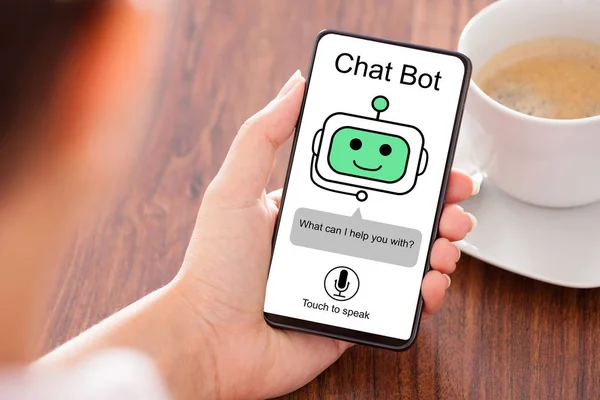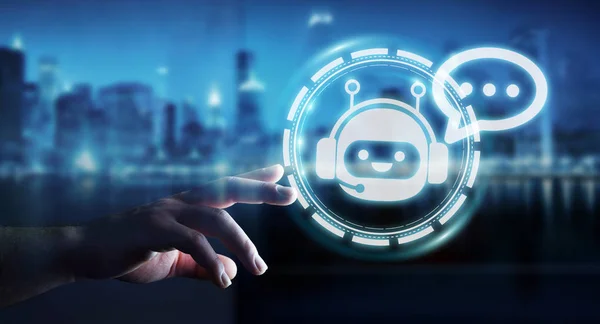Nigeria
Nothing surpass humans
Chatbots have become a popular tool for brands to communicate with customers, and recent news about Google's advanced chatbot system potentially becoming sentient has raised questions about the technology's lifelike abilities. Guillaume Laporte, CEO of Mindsay, explains that chatbots are becoming more human-like through the use of robots, with accuracy rates varying between 30% and 90%. Task-oriented chatbots can achieve human-like levels of customer service, but those expected to engage in wider conversations can struggle.
Advertisement

Chatbots have been in the news recently after a Google engineer claimed that the company’s most advanced system had become sentient. Chatbots are computer programs designed to mimic and respond to human speech, and they are found in many places, including Amazon’s Alexa, Apple’s Siri, and retail websites. Around 80% of people now use chatbots in some form, whether they are responding verbally or via written text. However, questions remain about how lifelike the best chatbots really are.
The use of chatbots as a means of communication between brands and customers is rapidly growing. A Google engineer’s claim that the company’s most advanced chatbot has developed human-like feelings has sparked recent interest in the technology. Chatbots, computer programs designed to mimic and respond to human speech, are now ubiquitous, found on websites, virtual assistants such as Amazon’s Alexa and Apple’s Siri, and university information systems like York’s Savy, which was created by IBM. As chatbots become more sophisticated, they are increasingly being used to streamline tasks and save time.
According to Guillaume Laporte, CEO of Mindsay, a French chatbot company now part of Laiye, chatbots are becoming more human-like in their behavior through the use of robots. He says that chatbots have improved tenfold in the past decade, using machine learning and AI to learn and understand users’ inputs. Despite their improvements, Laporte warns that chatbots are still not perfect, and human backup is necessary. The accuracy rate of chatbots varies between industries and companies, ranging from 30% to 90%. Mindsay’s clients include Nike, Walmart, and Avanti.
After this, according to Jim Smith, a professor in interactive artificial intelligence at the University of the West of England, it is important to distinguish between task-oriented chatbots that deliver a service and those that are expected to engage in a wider conversation. He explains that the former are the most commonly used and can work very well, particularly when they are taught using vast amounts of text data. When deployed in call centres or similar contexts where they know the kinds of questions they will be asked, these chatbots can achieve human-like levels of customer service. It is important, however, for transparency’s sake, that callers are made aware that they are interacting with a machine, not a human.

He says that there is a distinction between task-oriented chatbots and those that are expected to have a wider conversation. Task-oriented chatbots can work really well and can achieve human-like levels of customer service through machine learning and artificial intelligence. However, Professor Smith cautions that chatbots that are expected to have a more in-depth conversation with users can seem convincing to start with, but errors can keep multiplying, making it difficult to measure what is a human-like performance. Senior AI researcher Prof Sandra Wachter from Oxford University agrees that chatbots are still far away from appearing lifelike and highlights the importance of ethical responsibilities to avoid potential harm caused by confusion with actual humans.
However, Professor Jim Smith explains that there are two types of chatbots: task-oriented and those expected to have more of a conversation. Task-oriented chatbots can achieve human-like levels of customer service through machine learning, but more in-depth chatbots can appear convincing at first, with errors multiplying. Professor Sandra Wachter of Oxford University agrees that chatbots are far from appearing lifelike, and emphasizes the importance of ethical responsibility to avoid confusion with actual humans and potential harm.
Trending Topics

Review Zenith MasterCard and Visa Classic Credit Card
Zenith Bank Mastercard International Classic Credit Card! With it, you can shop at millions of stores around the world! Check it out here!
Keep ReadingYou may also like

Central Bank of Nigeria: Learn More
The bank regulates and supervises the activities of commercial banks and other financial institutions in the country.
Keep Reading


